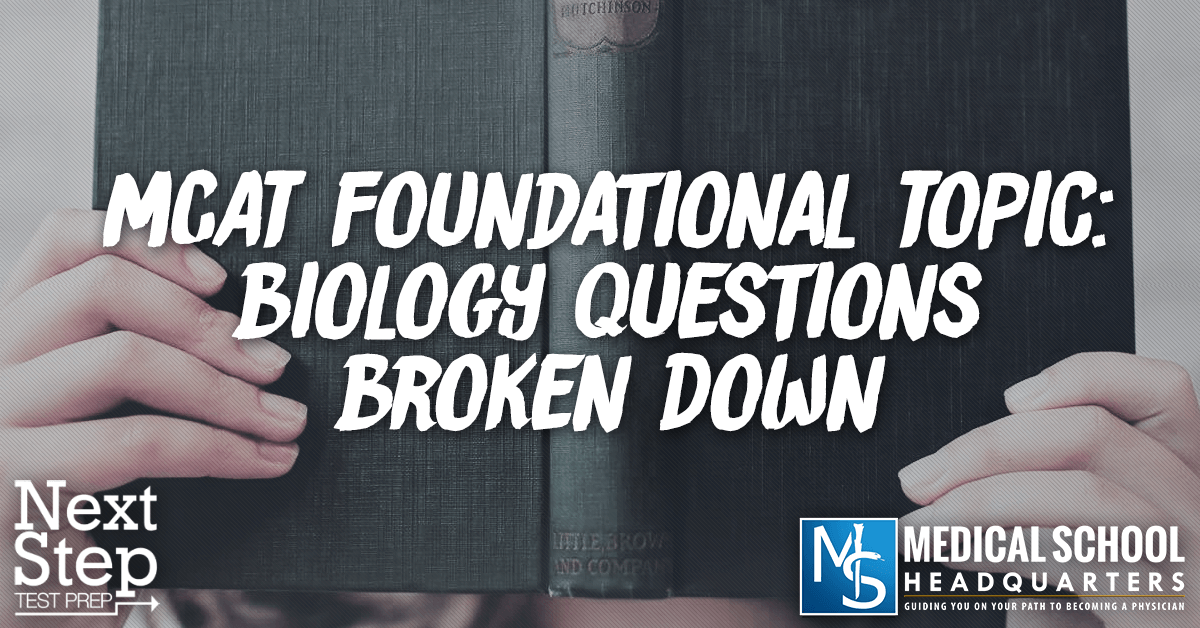
We’re starting a series of foundational subject material. Each week, we’ll cover some foundational topics for each section. This is what you need to know.
I am joined every week by Bryan Schnedeker from Blueprint MCAT (formerly Next Step Test Prep). He’s the VP for Content Development at Next Step for the MCAT. He knows his stuff. He’s got some amazing history on his scores (he gets 525s!). And os his taking his expertise to us to help you crush your MCAT!
By the way, check out all our other podcasts on MedEd Media.
Back to the episode today, we discuss some foundational stuff. Bryan adds we’re touching the “fundamentals” over the next few weeks. These are questions that get to the real core of the sciences on the MCAT. Specifically today, we’re looking into membranes, being one of the most foundational topics in Biology.
Question 03: Of the following statements, which correctly describes the fluid mosaic model?
Bryan’s insights:
For (D), a leaflet is one half of the plasma membrane. And this is the right answer. The fluid part of fluid mosaic means that the proteins can flow around within a given chunk of the cell membrane.
Bryan says you can cut corners on the passage, but you’ve got to read every word of every answer choice when you work on the questions.
Again, within the leaflet means within the membrane. A leaflet can either be outward-facing part of the membrane or the inward-facing part of the membrane. So two leaflets make a membrane.
Question 04: A researcher is attempting to create an artificial cell membrane that retains its fluidity at extremely low temperatures. Which features should he incorporate in this membrane?
Butter becomes a fat because it’s saturated. Olive oil stays a liquid because it’s unsaturated. Unsaturated has a little kink in the chain. So instead of a nice, smoothly packing big, long fatty acid chain that can pack up right against another one, unsaturated introduces this fluidity.
In this case, the right answer is (D). Cholesterol helps maintain fluidity as well as the unsaturated acids.
Question 05: Which of these statements accurately identify a function of transmembrane proteins?
III. They are responsible for the production of the majority of the ATP synthesized in eukaryotic cells.
The right answer is (D).
Question 07: A researcher is investigating the absorption of manganese ions by epithelial cells. After observation, he concluded the manganese is moved into a cell until it reaches a concentration equilibrium. At which point, transport stops. Which of the following can be inferred?
Remember that ions don’t easily pass through cell membranes. And because ions are charged, and cell membranes are nonpolar, so the answer choice (A) is not going to work.
Since the question suggest equilibrium, if you’re going to actively pump something in a direction, you’re going to push it well past the equilibrium position. You’re not just going to hit one molar inside or outside. You’re going to actively pull it in. But manganese just hits the equilibrium position of even concentration, so the right answer here is (B), passive and uses a protein channel.
So make sure you’re solid on what sorts of things can just diffuse passively directly through the cell membrane versus what sorts of things need a channel to go through.

Lorem ipsum dolor sit amet, consectetur adipiscing elit
I just received my admission to XXXXX! This is unreal and almost feels like I am dreaming. I want to thank you for all of your help with my application. I cannot overstate how influential your guidance and insight have been with this result and I am eternally grateful for your support!
IM SO HAPPY!!!! THANK YOU SO MUCH FOR ALL YOUR HELP, IM INDEBTED TO YOU! Truly, thank you so much for all your help. Thank you doesnt do enough.
I want to take a few moments and thank you for all of your very instructive, kind and consistent feedback and support through my applications and it is your wishes, feedback, and most importantly your blessings that have landed me the acceptance!
I got into XXXXX this morning!!!! It still has not hit me that I will be a doctor now!! Thank you for all your help, your words and motivation have brought me to this point.
I wanted to once again express my heartfelt gratitude for your help in providing feedback during my secondary applications. Your guidance has been instrumental in my journey.
Just wanted to share my wonderful news! I received my first medical school acceptance! Thank you for all that you do for us Application Academy!!!
I am excited to tell you that I just got my third interview invite from XXXXX today! I can’t believe it. I didn’t even know if I was good enough to get one, let alone three – by mid-September. Thank you so much for all of your help and support up to this point; I would not be in this position without it!!
I wanted to thank you for helping me prepare for my XXXXX interview. Even in a 30-minute advising session, I learned so much from you. Thank you for believing in me, and here’s to another potential success story from one of your advisees!
I just received an acceptance with XXXXX! This is so exciting and such a huge relief and so nice to have one of our top choice schools! I also received an interview with XXXXX which brings the total up to 20 interviews! Thank so much, none of this would have been possible without you!

Join our newsletter to stay up to date
* By subscribing you agree to with our Privacy Policy and provide consent to receive updates from our company.
Resources
Advising Services
Podcasts & Youtube
Books
About
"*" indicates required fields